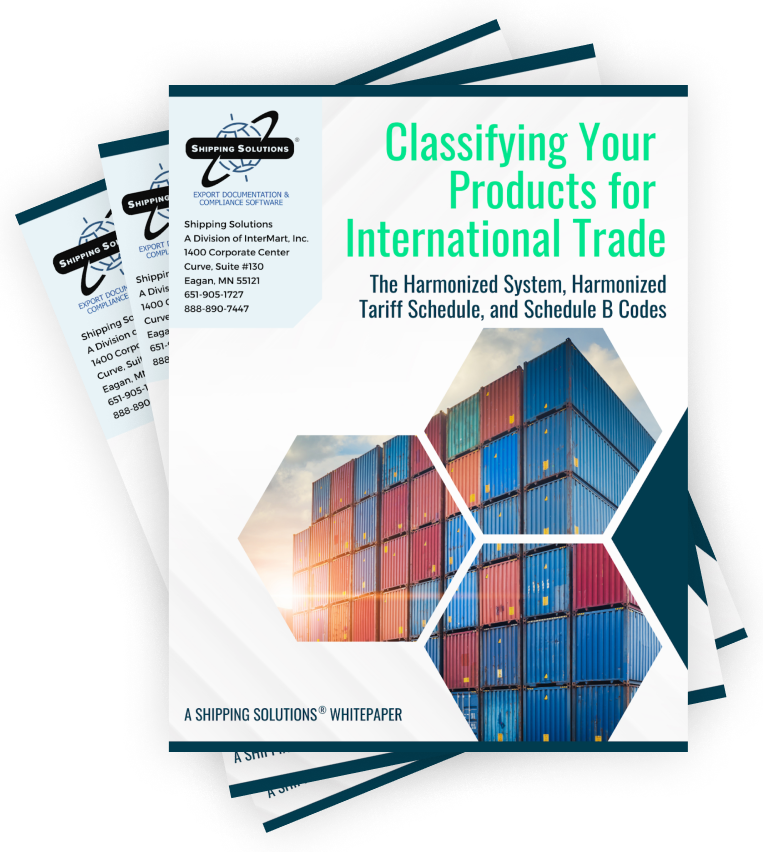The International Trade Blog Export Compliance
Exporters Filing Through AES: USPPI Address and State of Origin Should Match
On: July 25, 2022 | By:  Kari Crane |
5 min. read
Kari Crane |
5 min. read
 If you export goods valued at more than $2,500 per Schedule B number to anywhere other than Canada, you usually must file export information electronically to the Automated Export System (AES). It’s important you report this information accurately to meet your compliance responsibilities and to avoid receiving a response email warning that your filing was rejected.
If you export goods valued at more than $2,500 per Schedule B number to anywhere other than Canada, you usually must file export information electronically to the Automated Export System (AES). It’s important you report this information accurately to meet your compliance responsibilities and to avoid receiving a response email warning that your filing was rejected.
The U.S. Census Bureau recently called attention to one instance where exporters aren’t always getting it right: Their U.S. Principal Party in Interest (USPPI) Address State and State of Origin do not match, despite the definitions provided in the Foreign Trade Regulations (FTR) being almost identical.
Though this may not cause a fatal error in AES (other mistakes like including a P.O. box in the USPPI address will), it is your responsibility to get it right. Census needs this information to publish export statistics at the state level, so its Trade Regulations Branch (TRB) began reaching out to USPPIs to train them on the correct AES filing requirements.
“The overall goal of this research is to determine if the removal of the State of Origin data element would have any risk to the Census Bureau’s statistical processing,” said Census. More than 12% of the Electronic Export Information (EEI) filed in AES included a discrepancy between USPPI Address State and State of Origin.
Who Is the USPPI?
To correctly report this information, exporters should first understand how to identify the USPPI. The Census Bureau defines USPPI this way: "The person in the United States that receives the primary benefits, monetary or otherwise, of the export transaction; generally that person is the U.S. seller, manufacturer, order party, or foreign entity. The foreign entity must be listed as the USPPI if it is in the United States when the items are purchased or obtained for export."
There’s only one case where the forwarding agent can be listed as the USPPI: A freight forwarder who acted as a customs broker and arranged import clearance of goods can be listed as the USPPI if the goods are subsequently exported without change or enhancement.
Learn more about who can and cannot be the USPPI in these articles:
- Understanding U.S. Principal Party in Interest
- USPPI vs. Exporter: What's the Difference
- Standard vs. Routed Export Shipment: What's the Difference?
Address of the USPPI
Once you’ve identified the USPPI for your international transaction, you’re ready to report their address in AES. Here is how it is defined in section 30.6 of the FTR:
(a)(1)(ii) Address of the USPPI. In all EEI filings, the USPPI shall report the address or location (no post office box number) from which the goods actually begin the journey to the port of export even if the USPPI does not own/lease the facility. For example, the EEI covering goods laden aboard a truck at a warehouse in Georgia for transport to Florida for loading onto a vessel for export to a foreign country shall show the address of the warehouse in Georgia. For shipments with multiple origins, report the address from which the commodity with the greatest value begins its export journey. If such information is not known, report the address in the state where the commodities are consolidated for export.
Keep the following points in mind, because they tend to be why exporters report the wrong address:
- You can list the address of a holding facility you do not own.
- If your shipment has multiple origins, report the one from which the commodity with the greatest value begins its export trip.
- Use the location where you consolidate items for export if the value from multiple origins is the same or unknown.
Where Is the State of Origin?
State of Origin is defined almost identically in section 30.6 of the FTR:
(a)(4) U.S. state of origin. The U.S. state of origin is the 2-character postal code for the state in which the goods begin their journey to the port of export. For example, a shipment covering goods laden aboard a truck at a warehouse in Georgia for transport to Florida for loading onto a vessel for export to a foreign country shall show Georgia as the state of origin. The U.S. state of origin may be different from the U.S. state where the goods were produced, mined, or grown. For shipments of multi-state origin, reported as a single shipment, report the U.S. state of the commodity with the greatest value. If such information is not known, report the state in which the commodities are consolidated for export.
An Example
Census used this example to demonstrate how to properly report the USPPI Address and State of Origin:
A U.S. company, Pack, Inc. (Pack), headquartered in Texas sold goods to a foreign buyer in the United Kingdom. The goods originated in several states and were consolidated by a freight forwarder in California to be prepared for export. Pack could not determine the state where the highest value of goods originated. Therefore, to be compliant with the FTR, the USPPI Address and State of Origin shall be California, where the goods were consolidated. This is the case, even if Pack does not own/lease the consolidation facility. Pack would be incorrect if they reported their headquarters in Texas as the USPPI Address and State of Origin because that is not the location where the goods actually began their journey to the port of export.
More AES Filing Resources
Exporters who don’t understand AES requirements risk shipment delays, potential fines and other penalties. We have a number of resources where you can learn more about what’s required of you:
- Filing Your Export Shipments through AES: The new version of this white paper has been updated to reflect U.S. Customs and Border Protection's recent changes as part of their ACE Portal Modernization project.
- Classifying Your Products for International Trade: The Harmonized System, Harmonized Tariff Schedule and Schedule B Codes
- Who Is Responsible for Filing the Electronic Export Information (EEI)?
Like what you read? Subscribe today to the International Trade Blog to get the latest news and tips for exporters and importers delivered to your inbox.

About the Author: Kari Crane
Kari Crane is the editor of Passages: The International Trade Blog. Kari joined Shipping Solutions after working as an editor, writer and designer at a major market newspaper in Texas. Kari has spent her career finding different ways to tell stories and make complex topics easy-to-understand, so she loves helping importers and exporters understand how to navigate the complex world of international trade.


